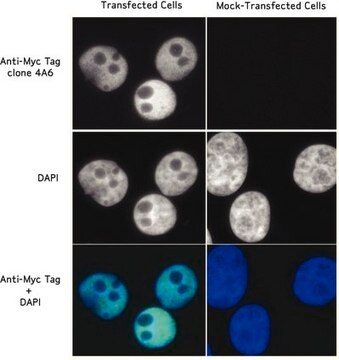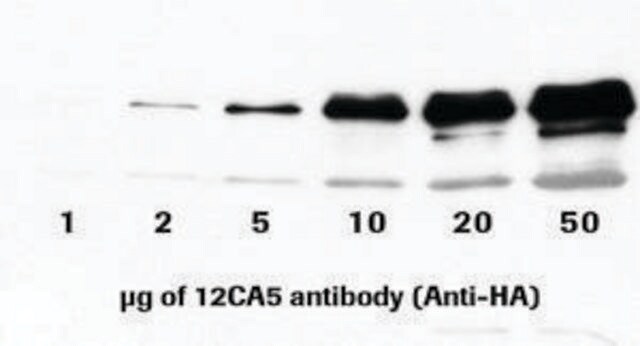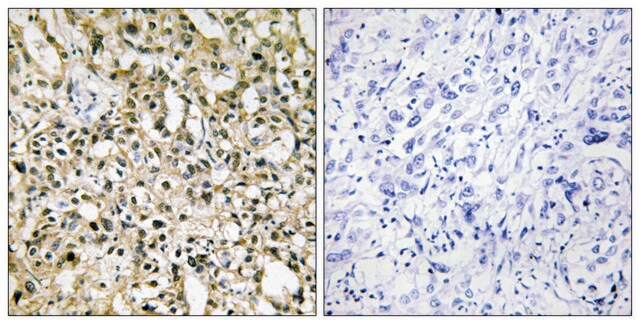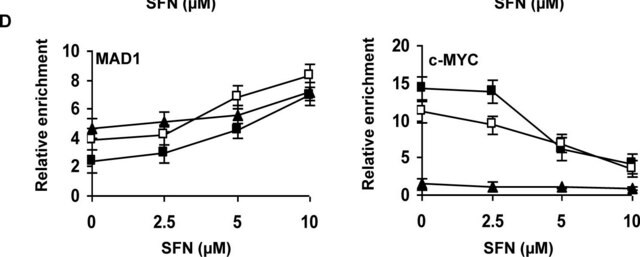ROAMYC
Roche
Anti-c-myc
from mouse IgG1κ
Sinónimos:
anti-myc
About This Item
Productos recomendados
biological source
mouse
Quality Level
conjugate
unconjugated
antibody form
purified immunoglobulin
antibody product type
primary antibodies
clone
9E10, monoclonal
assay
90% (SDS-PAGE)
form
frozen liquid (11667203001)
lyophilized (11667149001)
packaging
pkg of 200 μg (11667149001)
pkg of 5 mg (11667203001 [1 ml])
manufacturer/tradename
Roche
technique(s)
dot blot: suitable
immunocytochemistry: suitable
immunohistochemistry: suitable
immunoprecipitation (IP): suitable
western blot: suitable
isotype
IgG1κ
epitope sequence
EQKLISEEDL
storage temp.
−20°C
General description
The cellular myelocytomatosis (c-myc) is the cellular homologue of the v-myc gene originally isolated from an avian myelocytomatosis virus. The gene encoding it is mapped to human chromosome 8q24. It c-myc is a member of MYC gene family. c-Myc gene codes for basic helix-loop-helix/leucine zipper (bHLH/LZ) transcription factor that regulates the G1-S cell cycle transition.
Contents:
- 11 667 149 001: lyophilizate, stabilized
- 11 667 203 001: frozen solution, (5 mg/ml)
Specificity
Immunogen
Application
- Dot blots
- Immunocytochemistry
- Immunoprecipitation
- Western blots
- Immunohistochemistry.
Biochem/physiol Actions
Quality
Preparation Note
The following concentrations should be taken as a guideline:
- Western blot: 1 to 10 μg/ml
Working solution: Tris-buffered saline containing 0.1% Tween 20.
Reconstitution
Analysis Note
Other Notes
¿No encuentra el producto adecuado?
Pruebe nuestro Herramienta de selección de productos.
Storage Class
11 - Combustible Solids
flash_point_f
does not flash
flash_point_c
does not flash
Certificados de análisis (COA)
Busque Certificados de análisis (COA) introduciendo el número de lote del producto. Los números de lote se encuentran en la etiqueta del producto después de las palabras «Lot» o «Batch»
¿Ya tiene este producto?
Encuentre la documentación para los productos que ha comprado recientemente en la Biblioteca de documentos.
Los clientes también vieron
Nuestro equipo de científicos tiene experiencia en todas las áreas de investigación: Ciencias de la vida, Ciencia de los materiales, Síntesis química, Cromatografía, Analítica y muchas otras.
Póngase en contacto con el Servicio técnico












